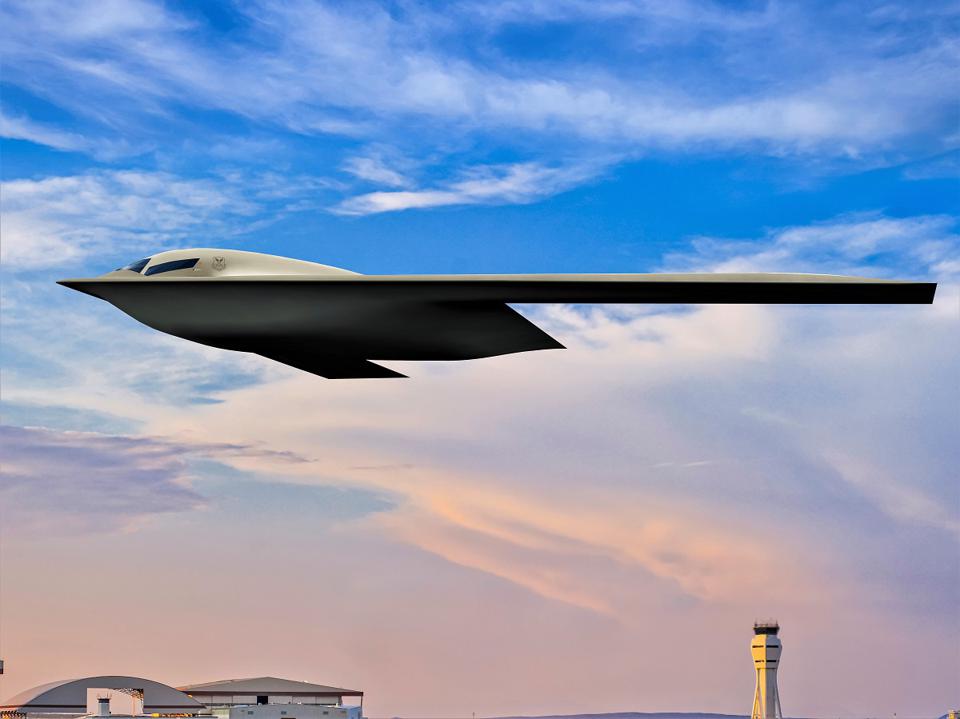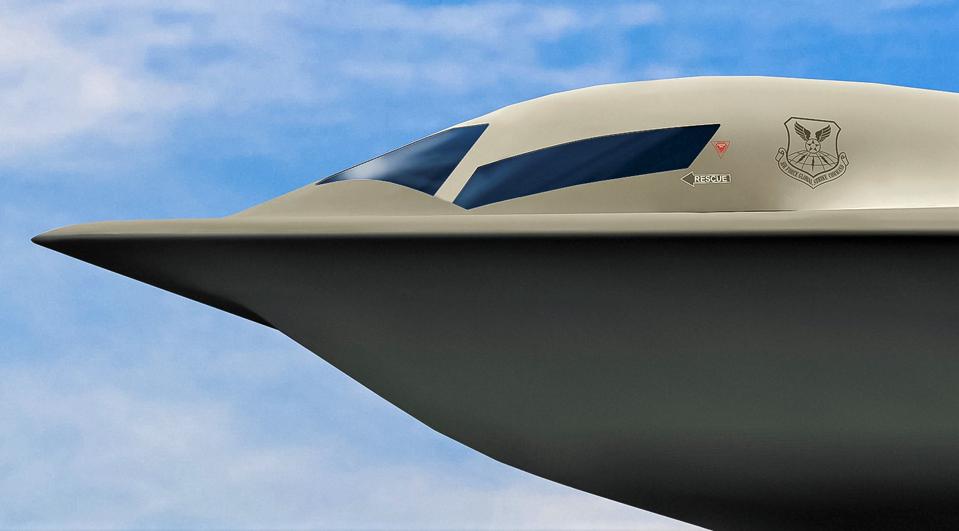


The Air Force released a new B-21 Raider artist rendering graphic to the Aviation world ! As with past renderings, this rendering is an artist’s interpretation of the B-21 design. Hiding fine details is easier with renderings.
The new rendering highlights the future stealth bomber with Edwards Air Force Base, California, as the backdrop. The 420th Flight Test Squadron based at Edwards AFB will plan, test, analyze and report on all flight and ground testing of the B-21 Raider.
The B-21 Raider will be a dual-capable penetrating strike stealth bomber capable of delivering both conventional and nuclear munitions. The B-21 will form the backbone of the future Air Force bomber force consisting of B-21s and B-52s.
Designed to operate in tomorrow’s high-end threat environment, the B-21 will play a critical role in ensuring America’s enduring airpower capability.
The B-21 Raider will be a component of a larger family of systems for conventional Long Range Strike, including Intelligence, Surveillance and Reconnaissance, electronic attack, communication and other capabilities.
It will be nuclear capable and designed to accommodate manned or unmanned operations. Additionally, it will be able to employ a broad mix of stand-off and direct-attack munitions.
The B-21 is being designed with open systems architecture to reduce integration risk and enable competition for future modernization efforts to allow for the aircraft to evolve as the threat environment changes.
The B-21 program continues to execute the Engineering and Manufacturing Development phase and is focused on scaling the manufacturing infrastructure and capacity across the industrial supply base to prepare for low rate initial production.

Designed to perform long range conventional and nuclear missions and to operate in tomorrow’s high end threat environment, the B-21 will be a visible and flexible component of the nuclear triad.
"Nuclear modernization is a top priority for the Department of Defense and the Air Force, and B-21 is key to that plan,” said Randall Walden, Air Force Rapid Capabilities Office director. “The built-in feature of open systems architecture on the B-21 makes the bomber effective as the threat environment evolves. This aircraft design approach sets the nation on the right path to ensuring America’s enduring airpower capability.”
The Air Force plans to incrementally replace the B-1 Lancer and the B-2 Spirit bombers to form a two-bomber fleet of B-21s and modified B-52s. The B-21 program is on track to deliver B-21s to the first operational base, Ellsworth AFB, South Dakota, in the mid-2020s.
The Department of the Air Force Rapid Capabilities Office leads the development of the B-21 Raider under the direction of the Under Secretary of Defense for Acquisition and Sustainment and the Secretary of the Air Force.
The Air Force awarded the B-21 Engineering and Manufacturing Development contract to Northrop Grumman on October 27th, 2015. Northrop Grumman’s partners on the B-21 program include Pratt & Whitney, Janicki Industries, Collins Aerospace, GKN Aerospace, BAE Systems and Spirit Aerosystems.
In 2018, the program successfully conducted the weapon systems Critical Design Review, a comprehensive program-wide evaluation of design maturity, stability and risk.
In 2019, the Air Force completed the Strategic Basing Process announcing Ellsworth Air Force Base, South Dakota; Whiteman Air Force Base, Missouri; and Dyess Air Force Base, Texas are the preferred locations for B-21 main operating bases.
After completing the Environmental Impact Statement process as required by the National Environmental Policy Act and other regulatory processes, in 2021, the Air Force named Ellsworth Air Force Base, South Dakota as the first B-21 main operating base and location of the Formal Training Unit.
The Air Force Test Center at Edwards Air Force Base, California will host the B-21 Combined Test Force and the Air Force Sustainment Center at Tinker Air Force Base, Oklahoma is the site for depot planning.
The B-21 Raider is named in honor of the historic Doolittle Raiders, U.S. Army Air Force men who are known for their surprise attack against Japan during World War II on April 18, 1942, which forced the Japanese to recall combat forces for home defense, and boosted morale among Americans and U.S. allies abroad.
Releasing an artist’s rendering is just to keep one Guessing , a Picture would have been Generous !
I'm so sick of trying to extrapolate anything meaningful off an illustration
— Valerie Insinna (@ValerieInsinna) July 6, 2021
Source : U.S. AIR FORCE
